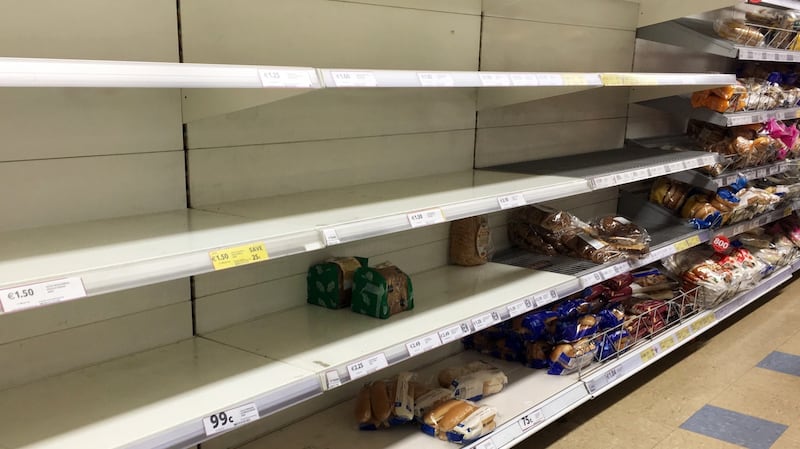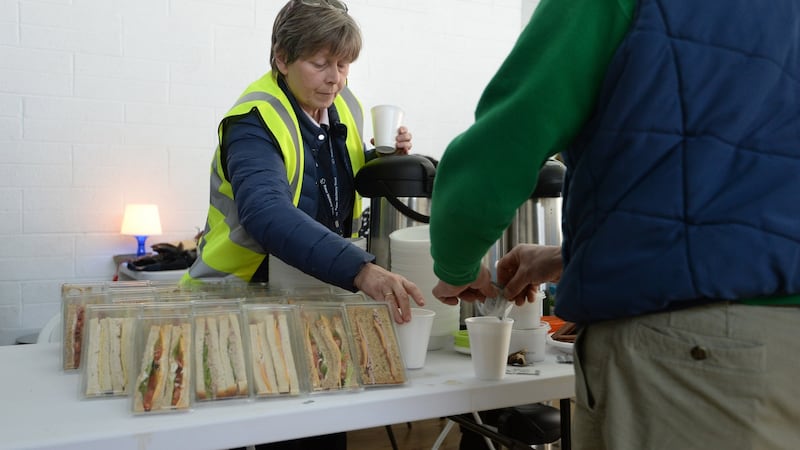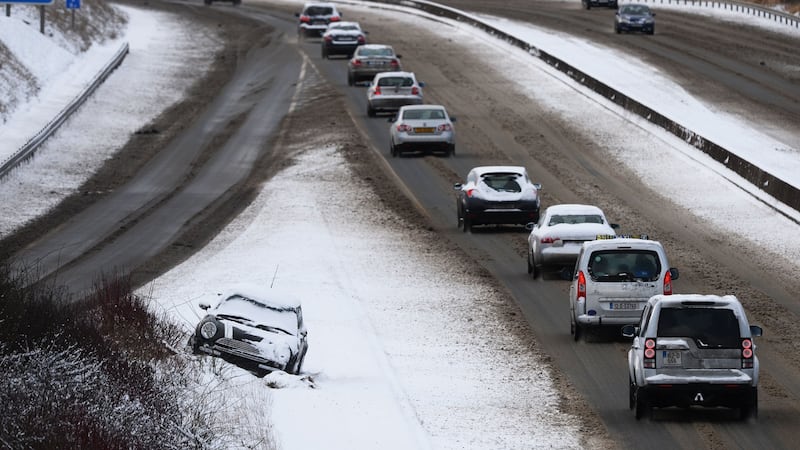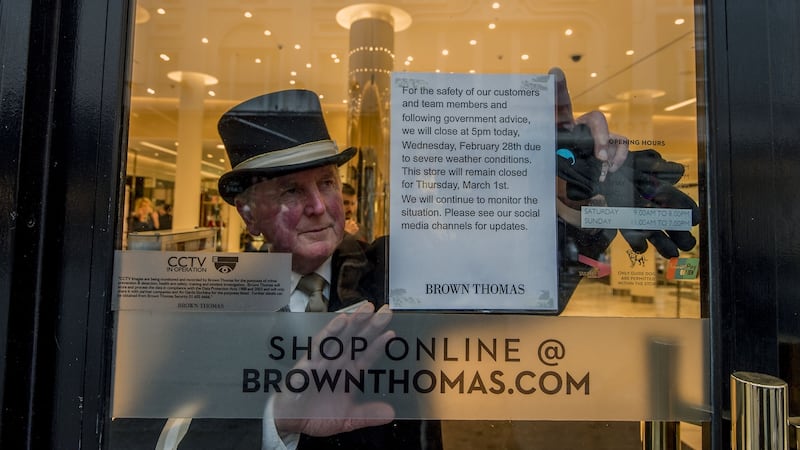If this week's snow storm has a face, it is that of weather forecaster Evelyn Cusack. Last Wednesday, rushing from a meeting of the National Emergency Co-ordination Group in Agriculture House on Kildare Street to the Glasnevin offices of Met Éireann, she was anxious to get, first hand, the very latest information.
The group might meet again that evening and the Taoiseach might want a situation update.
“I really want a high-quality briefing,” she kept repeating to herself as the taxi passed through largely empty streets.
0 of 4
As it pulled up outside the distinctive pyramid-shaped Met Éireann building, Surinder the driver turned to the deputy head of forecasting. “What will it be like tomorrow? Will I be able to go out? And for how long do you think.”

This past week, the population of Ireland, from Surinder the taximan to Taoiseach Leo Varadkar, has hung on Cusack’s every word.
Insofar as it is possible to predict weather accurately, Cusack and her meteorologist colleagues called it right – if anything, the clash of weather systems has had consequences more persistent and severe than initially expected.
It was clear something very big, very cold, very windy, and with a lot of snow in it, was coming this way
Examining the data from weather stations and satellite imaging, and putting it through prediction models, Met Éireann’s own Harmonie system, and also information from the European Centre for Medium Range Weather Forecastin, a dramatic picture began to take shape late last week.
By last weekend, it was clear something very big, very cold, very windy, and with a lot of snow in it, was coming this way. On Monday, the emergency group was planning to meet every day this week (it ended up meeting several times a day); a status orange weather warning was issued for Dublin, Carlow, Kildare, Laois, Louth, Wicklow and Meath to prepare people for weather that would have a significant impact on them. And supermarket shelves were emptying.
Panic buying
Last weekend, Geoff Byrne, chief operations manager at Tesco Ireland, reckoned there was going to be at least some panic buying. Already, there was talk of severe weather for most of the week, of snow, of schools closing.
Byrne oversees the running of a large distribution depot for Tesco in Donabate, north Dublin. Supplying the company’s outlets is done by a restocking system called “continuous replenishing”, which uses an algorithm to react to changes in consumer purchasing habits to tweak the company’s supply-chain orders.

But when buying habits change dramatically and with virtually no notice, the system cannot keep up. And what happened last weekend was exceptional. Panic buying started on Sunday and bread sales doubled overnight. Like bears preparing for winter hibernation, the entire country seemed to be stocking up.
“I can’t remember the last time I’ve seen a consumer reaction like Monday,” says Byrne. “Maybe it was the name [that prompted consumer reaction] – the Beast from the East.”
Last Monday at 2pm, Byrne knew the system was under severe pressure when a manager in Tesco’s Arklow outlet sent him a photograph on WhatsApp of rows of empty bread shelves. Bakeries put on extra shifts and were able to increase supplies by 20 per cent.
All week, however, every supermarket struggled to meet demand. As shops closed early on Thursday, whole aisles were empty, many devoid of bread, milk and vegetables.
Rough sleepers
The most vulnerable, the rough sleepers, were uppermost in the mind of everyone at Focus Ireland. The homeless group, which has provided accommodation, mostly long term, for some 800 people in Dublin, Cork, Waterford, Limerick, Kildare and Sligo, spent last weekend working out who was available for the coming week and who could be drafted in.
“From the start,” says team leader Niall Keane, “we targeted people that were difficult to reach.”
They're just service-resistant people. It can be for a variety of reasons
From Monday, they were able to double the number of teams looking for rough sleepers and offering them shelter. The Focus Ireland website has a rough-sleeper alert system through which members of the public can use a map pinpointer to tell the organisation the precise location of someone sleeping out in the open.
“We usually get 70 or 80 alerts a month,” says Keane. “This past week, we’ve had 1,200 and today [Thursday] we had 350 alerts.”

Most people accept offers of help and as the week progressed and the temperature dropped, even the reluctant ones began coming in from the cold. But there remained about 20 who would not.
“They’re all over,” says Keane, “in Dalkey, Swords, Malahide, the city centre, around the Royal Canal. They’re just service-resistant people. It can be for a variety of reasons – mental health issues, addiction or maybe they had a bad experience one time in a hostel and just don’t want to go back. But we’re not giving up.”
Vivid communication
Cusack is a serious professional, with a knack for clear and vivid communication. “Every weather situation is difficult, and snow is particularly difficult for Ireland,” she says. “We’re a small island in the middle of the sea. When you get cold air, the sea temperature modifies it. Snow is particularly difficult to forecast because quite often, the difference between snow and rain is just half a degree, and all rain starts as snow.”
Explaining the clashing weather systems that gave rise to this week’s conditions, she segues into a little history (not her favourite subject), explaining that the word “front” to describe the leading edge of a weather system was coined by a pioneering early-20th-century Norwegian meteorologist who, examining how moving bands of cold and hot air interacted, was influenced in his description by events in Flanders in the first World War – the so-called Western Front.

Sitting in Met Éireannand looking at swirling masses on a computer screen, she points to Storm Emma, describing what she expects to happen when the mid-Atlantic storm, first noticed swirling about the Azores, moves north-east and meets the Siberian gales sweeping west across north-ern-central Europe, the North Sea to hit eastern Ireland.
Emma’s relatively mild and wet air (a warm front) will slam into the cold front, she predicts, freezing Siberian weather system, she predicts. and, Instead of drowning Ireland in rain, which would be fairly normal, the precipitation will turn to snow – an awful lot of snow.
“It’s like when the steam from the shower hits the cold mirror on the bathroom wall and produces condensation – rain – on the glass.”
Motorway maintenance
It is 7pm on Tuesday and 10 burly men, all in heavy boots, woolly hats and heavily padded, high-vis jackets and trousers, are in the manager’s office at Transport Infrastructure Ireland’s (TII) motorway maintenance depot by Junction 6, the Balbriggan turnoff on the M1.
Duty engineer John Paul Lappin is briefing them on the tasks for the night. They will work until 7am on Wednesday – a straight 12-hour shift – gritting and ploughing snow.
The depot has a huge shed that looks like an aircraft hanger with 8,000 tons of rock salt piled high
There are 150 kilometres of motorway in the Dublin region, from Balbriggan in the north to Wicklow town in the south, west to Kinnegad and all parts in between, and they’re going to keep the roads open. When the snow comes, no one can be helped if they can’t be reached, and almost all of that, bar helicopter emergency evacuation, will be achieved by road.

The hierarchy of priorities is first to keep the motorways open, then regional roads feeding them and, lastly, local roads. This unit looks after the motorways; responsibility for the regional roads rests with local authorities.
The depot has a huge shed that looks like an aircraft hanger with 8,000 tons of rock salt piled high. It comes mostly from the Salt Sales company in Carrickfergus, Co Antrim and costs between €35 and €50 a ton. It is over 90 per cent pure salt with a little mud, which gives it its pink tinge.
TII buys the salt in bulk in the summer, when prices are low, and supplies the local authorities as well as itself.
“You could pay twice, three times, that if you were looking for it now,” says Stephen Smith, winter operations manager at TII. The Balbriggan depot is one of four created by TII after the snow of 2009/2010.
Gritters spread salt at a rate of 10 to 15 grams per square metre of road surface in frosty conditions. Tonight, the weight will be 25 grams – on top of the 25 already spread earlier in the day.
A dumper heaves tons of salt onto the back of the big yellow Volvo gritting trucks. On either side of the trucks, there are 5,000-litre brine tanks. The liquid wets the salt as a conveyor belt pushes it to the rear of the truck and onto a spinning disc, scattering it onto the road, the brine making it stick to the surface.
The gritters have snow ploughs bolted onto their front, as do general maintenance lorries, drafted in to assist. If it snows after gritting, they will plough, pushing the snow off the road.
Each man gets his marching orders – a map of a section of the network, a blue line showing him his route to his stretch, the stretch itself shown green. Gritting is controlled from the cab; a temperature gauge reads the road surface. They can all keep in touch by radio, and with the on-call duty officer, Daniel.
“We’re going to eat through this lads,” says Lappin.
Traffic cameras
The Dublin Region Traffic Control Centre is stationed in the Civic Offices at Wood Quay. One wall is a mass of TV screens, each one relaying what a camera sees across much of the 300 kilometres of roads in and around the capital.
There are over 350 traffic cameras. The control room also monitors some 800 traffic lights which can also be turned on and off from here. The centre is also home to Dublin City FM. What the centre does is integrated with Dublin Bus, the Fire Brigade and the Garda as well.
For much of the week, Brendan O’Brien, head of technical services, John Flanagan the city engineer and Dennis Keeley, assistant chief fire officer, have been liaising with the emergency group in Agriculture House, but also holding their own regional meetings, pooling resources, sharing information and responding to the growing crisis.
It is probable that the Air Corps will be used for surveillance – looking for stranded vehicles and communities cut off
On Thursday, as the city shut down with measured determination, the control room screens showed eerily empty streets. The roads were open – the council’s gritters had done their bit – but people were staying out of town.
In preparation, the city’s Civil Defence positioned equipment at locations dispersed around the city, including four-wheel drive vehicles.
Fearing that people might get trapped – locked out of their offices but unable to get home – six rest centres were identified if large numbers of displaced people needed shelter. They were in Ballyfermot, Inchicore, Cabra, Poppintree, Darndale and Marrowbone Lane, where emergency accommodation for rough sleepers was also provided.
Over 500 Defence Forces troops have been involved, ferrying some 40 plane passengers stranded at Cork Airport.
Much of the military involvement to date has been at the request of the other emergency services and the Health Service Executive.
This weekend as conditions ease, it is probable that the Air Corps will be used for surveillance – looking for stranded vehicles and communities cut off, and spotting where power lines have come down.
Urgent briefing
Evelyn Cusack got her urgent briefing at Met Éireann. Kneeling on the floor, she and Joan Blackburn, her colleague and friend from student days in UCD, stared at the computer screens and read the blizzard of information.
Blackburn points to a graph, a cross-section in time. The line flows left to right, rising gently before, at a point on Thursday evening, the predicted gradient rises steeply upwards.
“From now onwards,” says Blackburn, “you are talking about 8 centimetres.”
They speak about Cork, where eight high tides were expected over the weekend, corresponding in time with the arrival, passage and aftermath of Storm Emma.

There’s a near full moon which often generates unusually high tides. Given the wind and low pressure, it’s a combination the authorities in Cork, who have had more than their fair share of flooding in recent years, have reason to fear.
Blackburn pulls up another cross-section in time. “Eighteen hundred hours [six o’clock],” she says, “Five centimetres rising to 18 centimetres. That’s the event – from eighteen hundred hours onwards.”
“The event” is what was expected to happen when Emma met the Beast.
Within a short time, the prediction was for 40cm of snow in parts of Wicklow, Dublin, Kildare, Meath and maybe Louth. The last time anything like that happened was when 45cm was recorded at Casement Aerodrome in 1962.
Early yesterday as the blizzard ebbed, the Balbriggan-based gritters were out again, ploughing away.














